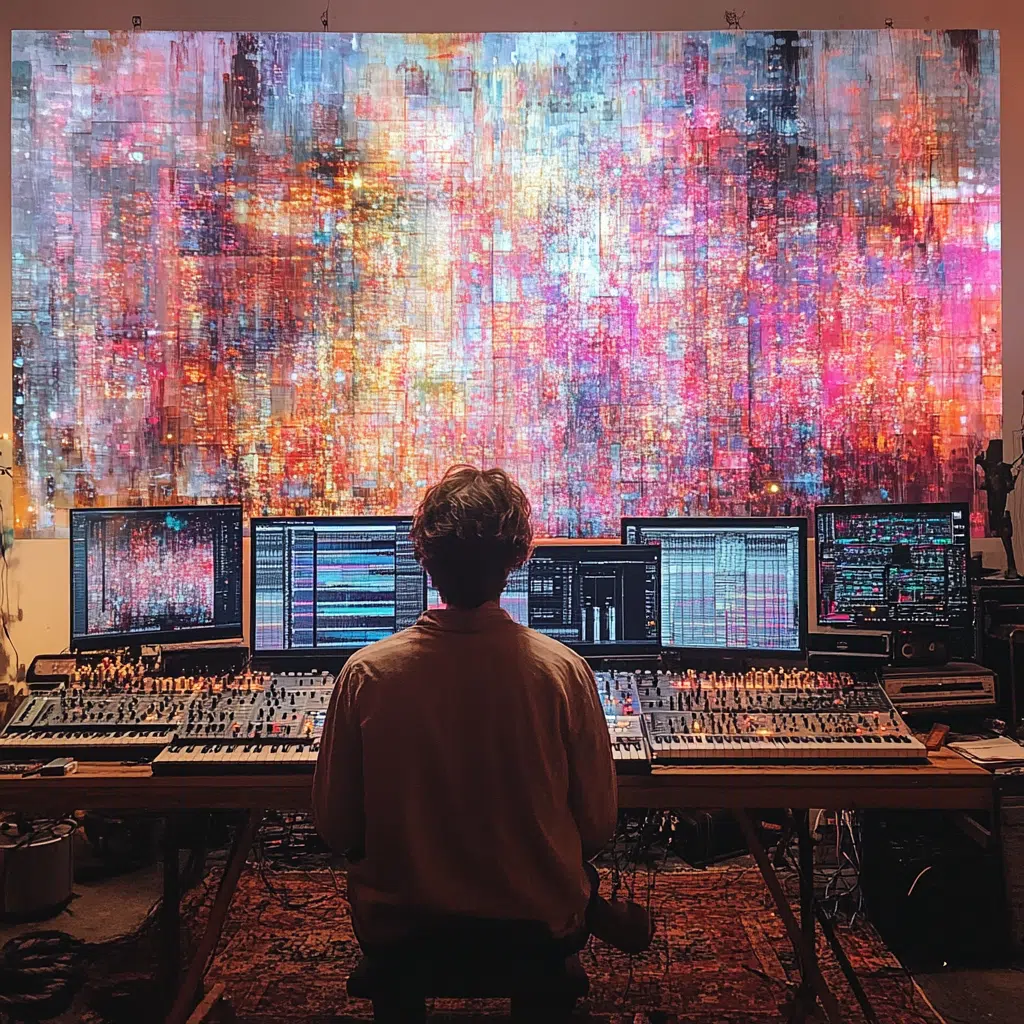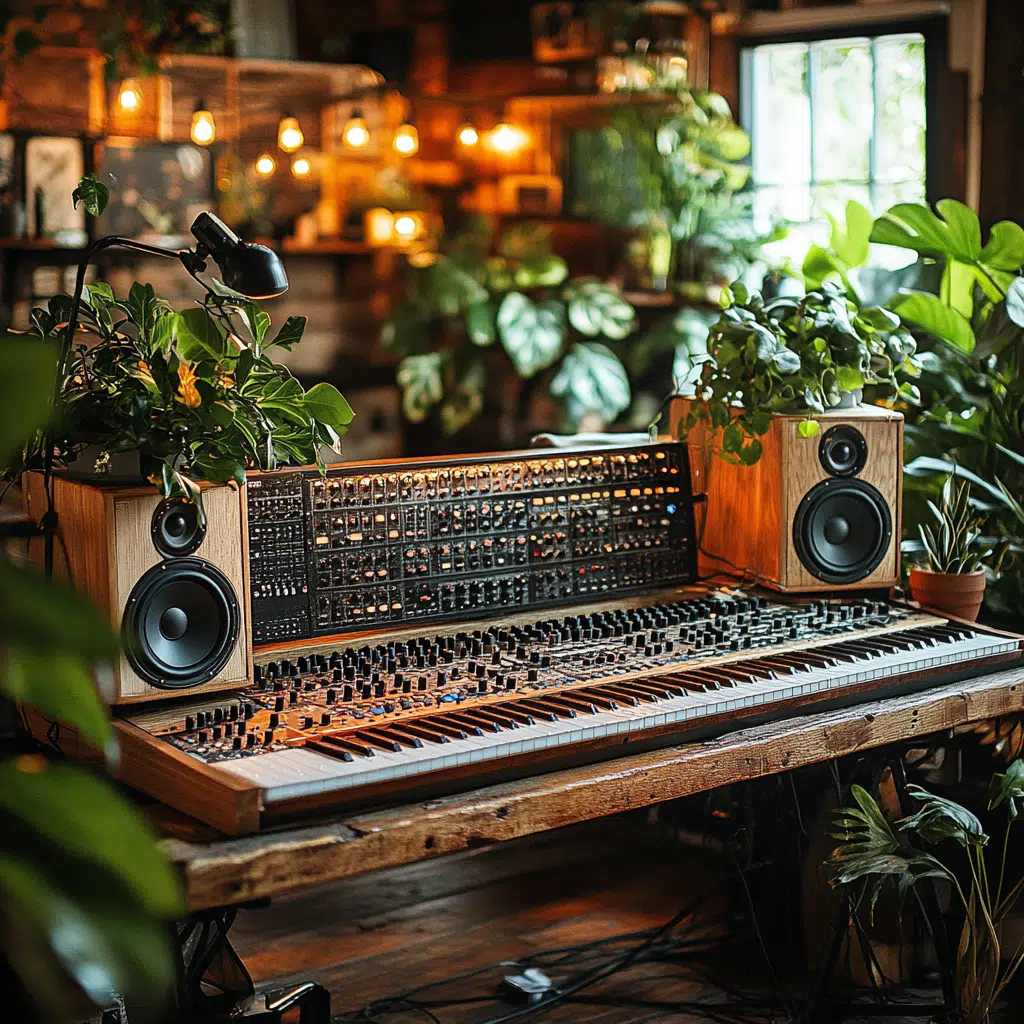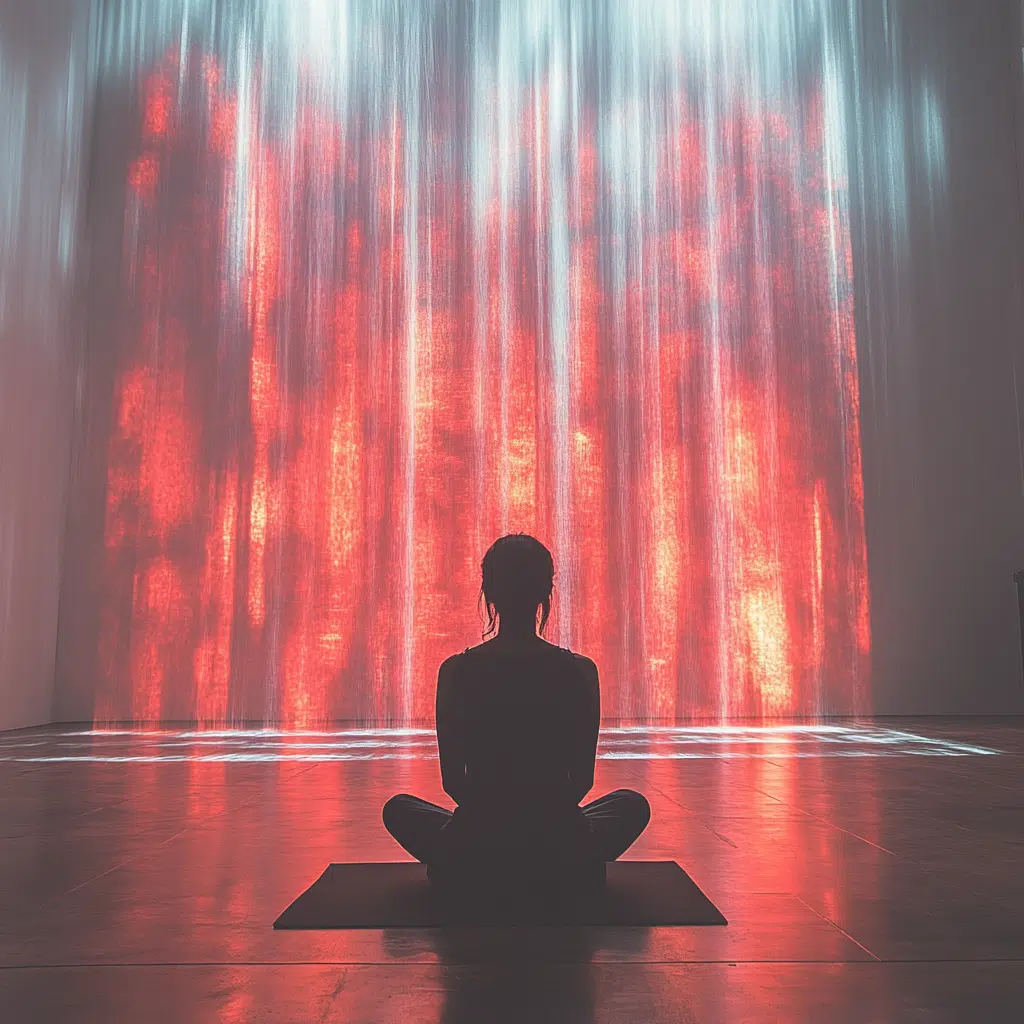In today’s fast-paced film and TV industry, Remote Foley and Sound Effects have become the game-changer that creatives never knew they needed. The global pandemic took the world by storm, and as filmmakers scrambled to adapt, remote collaboration became integral to audio production. Gone are the days when artists were confined to sound studios; now, talented Foley artists and sound designers can work right from their home studios, creating high-quality soundscapes that rival traditional setups. This article dives deep into the transformative power of remote sound production, shedding light on the innovative ways it’s shaping our audio experiences and storytelling.
The Rise of Remote Foley and Sound Effects in Modern Audio Production
The shift to Remote Foley and Sound Effects production reflects a broader movement toward flexible workflows. Filmmakers now possess the ability to collaborate seamlessly with sound professionals across the globe, tapping into a wealth of creativity that wasn’t readily accessible before. Imagine a talented Foley artist in a cozy home studio in New York teaming up with a director in Los Angeles, all thanks to advanced remote technology. It’s the perfect blend of creativity and tech, bringing fresh sounds and vibrant uniqueness to projects that shoot straight for the stars.
With unprecedented access to a global talent pool, filmmakers can find the right sound artist for their vision—be it capturing the sound of footsteps echoing through a dark alley or the whoosh of capes dramatically sweeping through scenes. Besides the artistic flair that remote collaboration offers, it’s about cost-effectiveness, too. By eliminating expenses tied to studio rentals and travel, filmmakers can allocate more of their budget to enhancing other compelling aspects of their projects.
However, this new landscape doesn’t only empower artists; it challenges them as well. No longer tethered to traditional studios, sound designers must navigate the intricacies of audio capture at home. Yet, it’s this very challenge that’s ignited a flourishing of innovation in creating immersive audio experiences.
Top 7 Remote Foley and Sound Effects Services Transforming the Industry
Several platforms and services have emerged, leading the way in redefining Remote Foley and Sound Effects production. Here are seven standout providers:
Founded by award-winning Foley artist John Smith, Foley at Home connects filmmakers and artists from varied backgrounds. They cater to indie films with high-quality recordings that won’t break the bank.
With an extensive library of professional sound effects, Soundsnap has become a go-to for many. Their subscription service allows filmmakers to access thousands of sounds, making effective remote sound design just a click away.
Zapsplat mixes an impressive array of free and affordable sound effects with community-driven features. Users can request specific sounds, effectively crowdsourcing the Foley production process.
Based in New York, Psychoacoustic Studios utilizes live streaming and virtual editing sessions for real-time collaboration, adding a dynamic twist to traditional Foley work.
Connecting filmmakers with talented remote Foley artists worldwide, Foley One offers custom sound effect production. Each recording is tailored to specific scenes, ensuring every sound enhances the viewing experience.
Renowned for their high-quality sound effects, Boom Library provides options for both off-the-shelf and customizable sounds, with licenses adaptable for various remote uses.
They specialize in crafting cinematic soundscapes. Audiomachine’s remote recording capabilities ensure that original scores and sound effects align harmoniously with visual storytelling.
These services exemplify how diverse talent can elevate any project. Engaging with platforms like Remote Mixing services toronto can be a pivotal step, too.
The Benefits of Remote Foley and Sound Effects: Enhancing Creativity and Flexibility
The advantages of utilizing Remote Foley and Sound Effects are plentiful. First off, flexibility reigns supreme. Artists can work on their schedules, resulting in polished pieces without the stress of traditional studio timelines. Additionally, this setup dramatically reduces costs, enabling filmmakers to make their budgets stretch further.
With the opportunity to collaborate with a diverse range of professionals, filmmakers tap into global sounds and cultural nuances that can transform storytelling into a vibrant tapestry of experiences. This international collaboration breeds creativity, pushing the boundaries of innovation across projects and genres.
Importantly, remote collaboration empowers lesser-known talents. For instance, an up-and-coming Foley artist might collaborate on a significant project, providing fresh perspectives that enrich sound design while the director focuses on shaping their narrative.
Challenges in Remote Foley and Sound Effects Production
While remote production has its perks, it’s not all smooth sailing. One of the most pressing challenges is the lack of physical collaboration. Misunderstandings regarding desired sound effects can arise without in-person interaction. To combat this, sound designers and filmmakers must employ clear communication methods and trustworthy collaboration tools to keep everyone on the same page.
Moreover, the technical limitations of home studios sometimes hinder the process. Not all Foley artists have access to professional-grade equipment, which can affect the fidelity of recordings. Investing in quality gear—such as microphones and soundproofing materials—can make a tremendous difference in achieving that cinematic sound you’re after.
Effective communication and standardization in practices remain crucial as the industry adapts to remote audio production. Utilizing platforms like Virtual Post Production Audio Services can help further mitigate these pitfalls.
Techniques for Successful Remote Foley and Sound Effects Creation
To help filmmakers and sound designers maximize the potential of Remote Foley and Sound Effects, consider adopting these techniques:
Through these methods, you’ll ensure that every sound you create resonates with your audience, embedding your story in their minds.
The Future of Remote Foley and Sound Effects in the Industry
As we peek into the future, the trend toward Remote Foley and Sound Effects production is poised to grow further. Upcoming innovations like artificial intelligence, which can assist with sound matching and creation, are already rippling through the industry. Coupled with enhancements in collaboration tools, this means we can anticipate an even smoother integration of global talent in audio production.
As filmmakers lean into these advances, the scope for remarkable sound design expands significantly. Merging creativity with technology will redefine audio experiences; it sets the platform for fresh, diverse narratives that captivate audiences. The fascination with high-quality sound will not only elevate storytelling to new heights but also resonate deeply with viewers long after the credits roll.
As we dive headfirst into this new era of storytelling, remember that quality sound isn’t just an accessory—it’s a critical element that can make or break a scene. Whether you consider the delicate sound of rustling fabric or the piercing scream of a noonday breeze, every audio detail contributes to an unforgettable cinematic experience.
The world of film is at your fingertips, and with the power of Remote Foley and Sound Effects, it’s time to elevate your production and create audio landscapes that transport your audience into the heart of the narrative!
Remote Foley and Sound Effects Transforming Your Audio Experience
The Magic of Remote Foley
Did you know that remote Foley artists can create sound effects from almost anywhere? With a simple setup and the right software, they can record footfalls, rustling leaves, and even a creaking door right in their living room! This flexibility has revolutionized how sound designers work, especially during times when studio access is limited. In fact, the adaptability of remote work methods isn’t just happening in sound design; it even extends to other careers as people consider roles like a suicide Hotline job, offering support from the comfort of their homes.
The Art of Sound Effects
The world of sound effects is a treasure trove of creativity! For instance, did you know that a single sound effect can require multiple layers to create the perfect auditory illusion? By blending different elements together—like footsteps on gravel, wind howling, or a door slamming—sound designers craft a rich auditory experience. This intricate process not only adds depth but ensures audiences are immersed in the story. Just like in choosing a personal loan Against income tax return, the right sound effectively marries purpose and emotion, making the project resonate with viewers.
Innovations in Remote Work
As technology marches on, so do the tools for sound designers. Now, amazing software allows remote Foley artists to maintain high-quality sound production, even while working miles apart. One fascinating fact is that many studios are now opting to mix content using Sound Design And Mixing canada professionals remotely, cutting down on travel time and allowing for a more diverse pool of talent. This shift paves the way for collaborations that were once thought to be impossible. So, whether you’re sipping coffee in your backyard or sitting in a bustling café, you can contribute meaningfully to the audio landscape. And speaking of security, it’s essential to stay informed—you wouldn’t want to fall victim to a situation like wire fraud, especially while handling sensitive files online!
In summary, remote Foley and sound effects not only elevate audio experiences but also open new doors for creativity and collaboration. As we adapt to these shifting paradigms, who knows what other exciting innovations await in sound design?
What is the difference between foley and sound effects?
Foley sounds are created live in-sync with the on-screen action, while regular sound effects are usually sourced from a library. Foley adds a layer of realism by replicating the everyday sounds we don’t notice, enhancing the viewing experience.
What are the 3 main categories for foley sound effects?
The three main categories of Foley sound effects are walking, props, and cloth. Foley artists record different sounds in these areas to ensure that the characters’ movements and interactions feel authentic and immersive.
Does a Foley artist creates audio special effects?
Yes, a Foley artist specializes in creating unique audio effects that match the visuals of films, TV shows, or video games. They focus on making everyday sounds that enhance storytelling.
What are three examples of sound effects that might be included in a foley library?
Three common examples of sounds you might find in a Foley library include footsteps, the sound of a sword being drawn, and the swishing of clothing as characters move. These sounds help fill in the audio landscape of a scene.
Are Foley sound effects still used?
Absolutely! Foley sound effects are still widely used in the industry because they add depth and realism to audio. Filmmakers depend on them to breathe life into their productions.
How much money does a Foley artist make a year?
A Foley artist’s salary can vary, but on average they make around $50,000 to $70,000 per year, depending on experience and location. Some seasoned artists can earn even more.
What is the most common Foley sound?
The most common Foley sound is probably footsteps, as they’re essential in establishing a character’s presence and movement within any scene.
Do Foley artists still exist?
Yes, Foley artists are still a vital part of audio production. Their unique skillset continues to be in demand as filmmakers look to create compelling soundscapes.
Why is it called Foley?
It’s called Foley after Jack Foley, the inventor of this technique. His innovative work in sound effects has had a lasting impact on film audio.
What skills do Foley artists need?
Foley artists need a range of skills, including creativity, good listening abilities, and an understanding of timing and rhythm to make sure sounds sync perfectly with the visuals.
Can Foley sounds be vocal?
Foley sounds can include vocal effects, like whispers or grunts, but they primarily focus on replicating non-verbal sounds associated with movement and interactions.
Is a sound designer the same as a foley artist?
While both roles deal with sound, a sound designer focuses on the overall audio experience of a project, while a Foley artist specializes in creating specific sounds to match the visuals.
What is the difference between Foley sound and sound effects?
Foley sound refers to specific audio recorded live to synchronize with actions on screen, whereas general sound effects can come from various sources, including libraries.
How do you make Foley sound effects?
To make Foley sound effects, artists use different props and materials to replicate sounds, then record these performances with microphones to match the action happening on screen.
What are the main pieces of audio technology needed to record Foley?
The main pieces of audio technology needed to record Foley include high-quality microphones, audio interfaces, and sound recording software. These tools help capture and modify the sounds effectively.
What is the difference between a Foley artist and a sound designer?
The difference lies in their focus; a Foley artist specializes in creating sounds that sync with actions, while a sound designer manages the overall audio environment and soundscape.
Are the terms Foley and sound effects interchangeable?
No, the terms are not interchangeable. Foley specifically refers to sounds created live and synced to the action, while sound effects can include a broader range of audio from various sources.
Why is sound called Foley?
It’s called Foley to honor Jack Foley, who pioneered this technique of enhancing film sound, making it an essential part of modern audio production.
What is the principal difference between traditional sound effects and Foley sounds quizlet?
The principal difference between traditional sound effects and Foley sounds is that traditional sound effects are mostly pre-recorded and sourced from libraries, while Foley sounds are crafted live during the production process to match onscreen actions.



